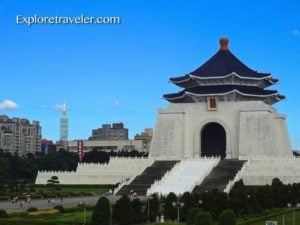Taipei, Taiwan: The City Seems To Rotate
Taipei, Taiwan: “Good Feng Shui Rotates,” Taipei, Taiwan is the… Read More »Taipei, Taiwan: The City Seems To Rotate

Taiwan has a lot of adventures for you the traveler and should be on your bucket list. From the cities to the beaches and everything in between. Taiwan has a tremendous amount of unique culture and food everywhere.
Taipei, Taiwan: “Good Feng Shui Rotates,” Taipei, Taiwan is the… Read More »Taipei, Taiwan: The City Seems To Rotate
Xinwu Mazu Temple Overlooking The Sea Xinwu Mazu Temple is… Read More »Xinwu Mazu Temple: Xinwu Township Taiwan
Fo Guang Shan Is The Fastest Growing Buddhist Organization In… Read More »Fo Guang Shan in Taiwan
Taiwan’s Aboriginal Past Lives At The National Museum of Prehistory… Read More »Taiwan’s Aboriginal Past Is Alive In Taitung
Taiwan’s Papaya Tree And How To Use It Taiwan’s Papaya… Read More »Taiwan’s Papaya Tree And It’s Uses
Bashian Cave: One of Ten Stone Age Caves Bashian Cave… Read More »Bashian Cave:Taiwan’s Stone Age Ruin
Taiwan’s Eastern Coastline: A Fascinating Land Taiwan’s Eastern Coastline, where… Read More »Taiwan’s Eastern Coastline
HSINCHU CITY TAIWAN Welcome to Hsinchu City Taiwan, “the city… Read More »Hsinchu City Taiwan
Nestled in the channel of the Japanese current… Read More »Green Island, Taiwan
By ExploreTraveler.com Persimmon Farms of Hsinchu Taiwan With all of… Read More »Persimmon Farms of Hsinchu Taiwan